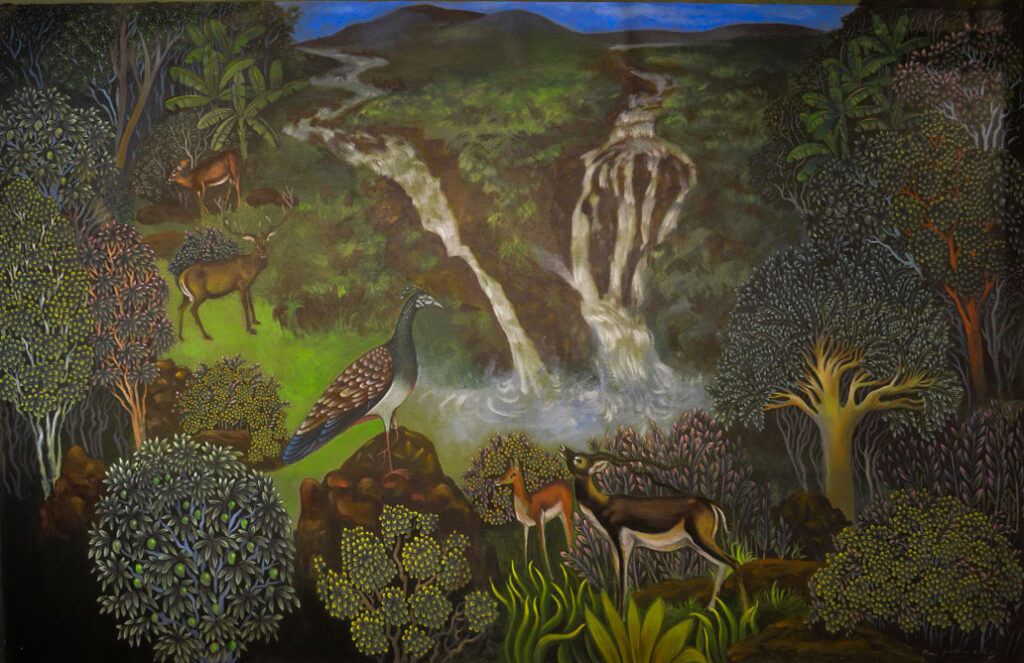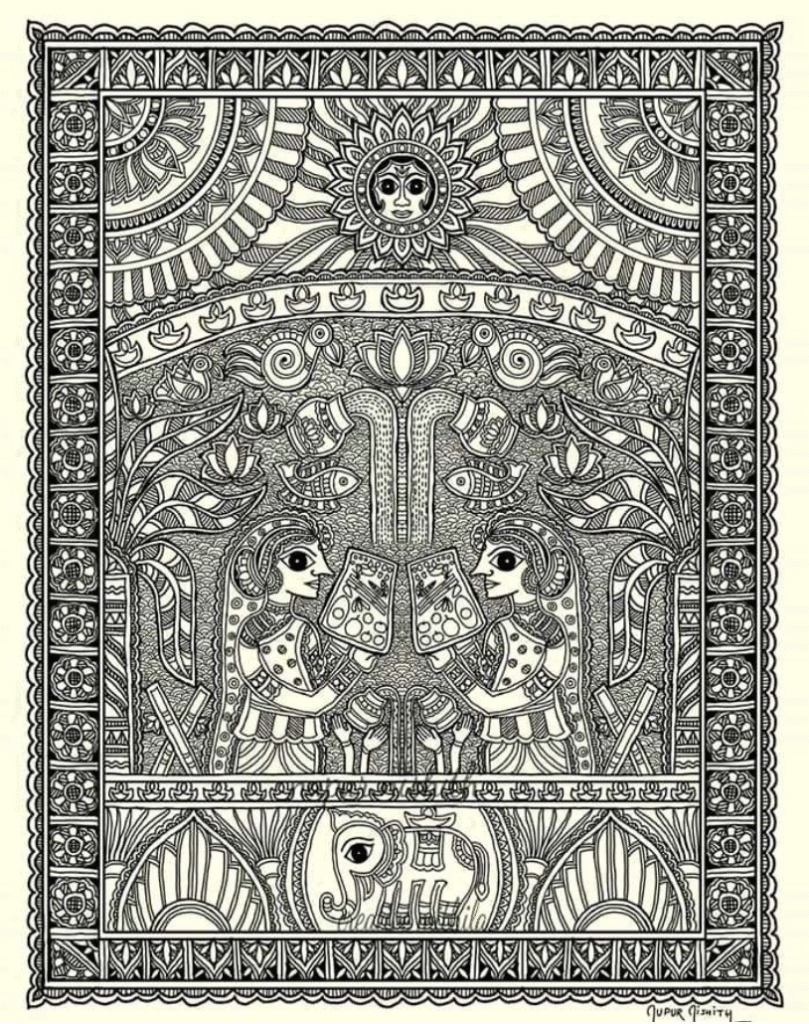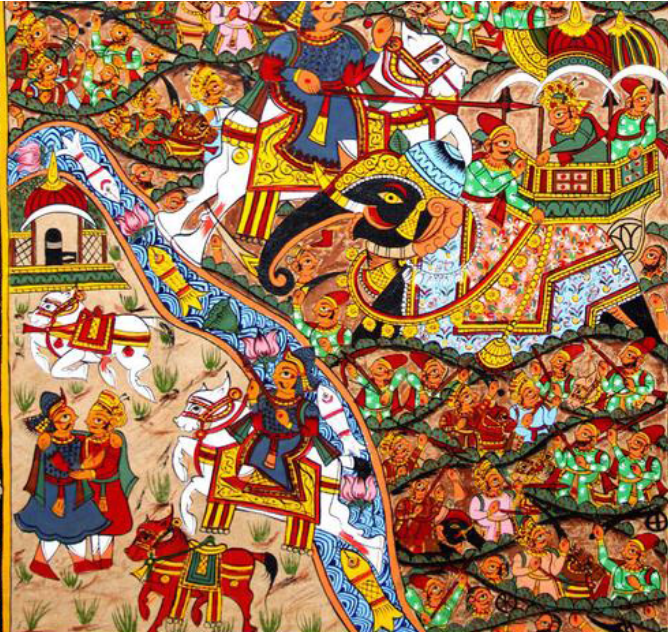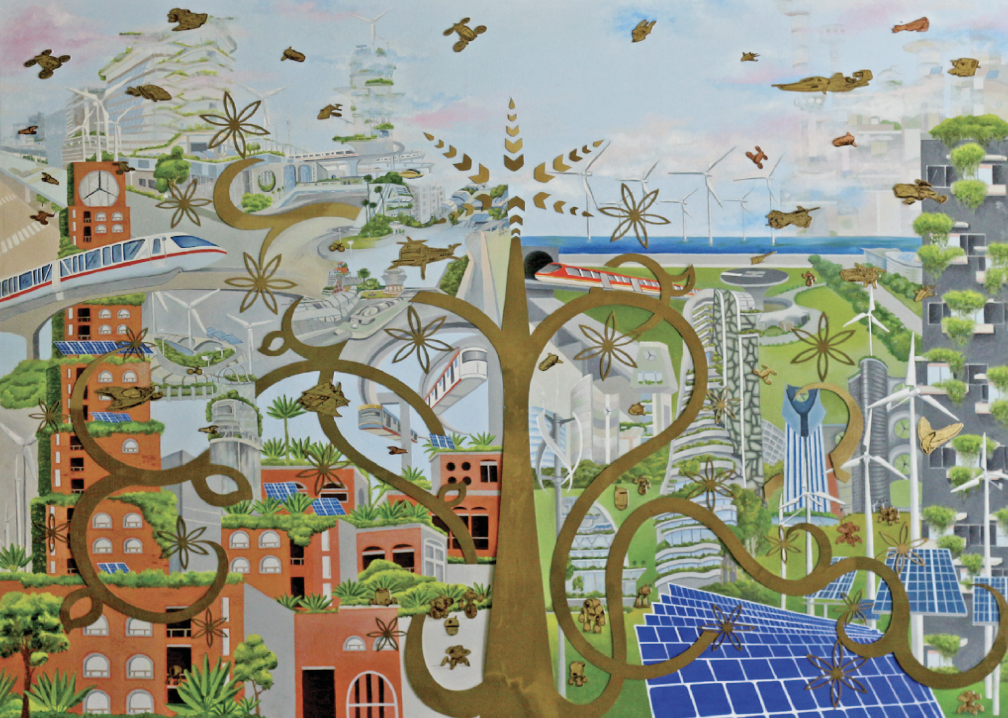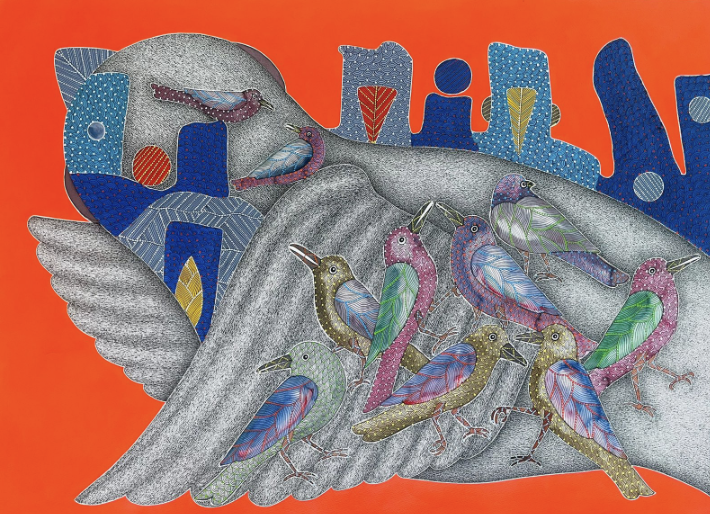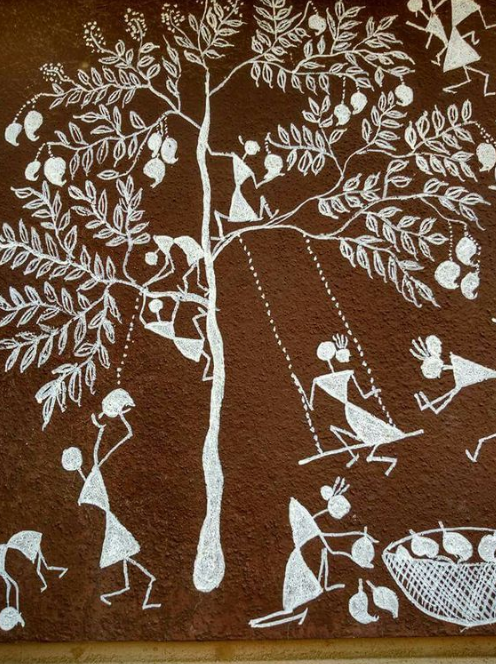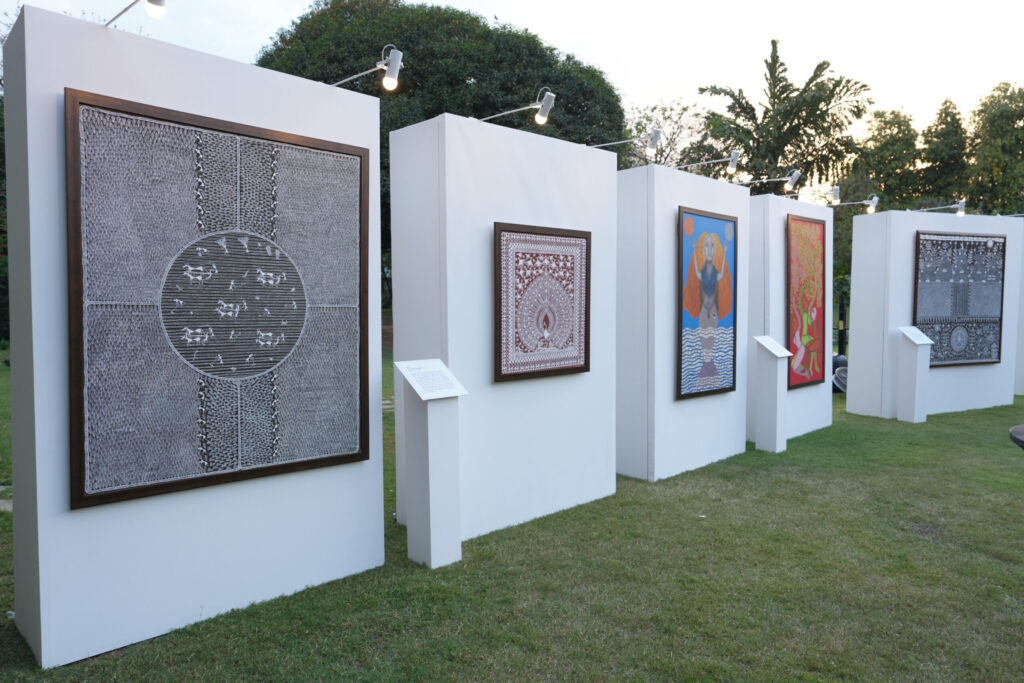
About the Project
Creating narratives and designs that tell stories is our forte. Ethos Watches, India’s largest luxury watch retailer, commissioned Baaya Design to develop a set of six paintings for their various offices.
Client Brief
Ethos Watches, India’s largest luxury watch retailer, with its headquarters in Chandigarh, approached Baaya Design with a vision to integrate meaningful, culturally resonant art into their corporate spaces. As a brand that deeply values craftsmanship, storytelling, and the concept of time, Ethos sought to collaborate with Baaya to develop a unique series of artworks that reflected its ethos pun intended, while also celebrating the spirit of Chandigarh and its own identity.
Design Process
We began with an immersive tour of the company’s Chandigarh headquarters and other offices to understand their story better. We then developed the concepts for each painting and identified styles that would be effective. Five artists were invited to Chandigarh to experience the city and the Ethos Watches premises first-hand while creating the conceptual framework for the paintings. The themes exploring modernity, time, urban landscapes, etc., were reinterpreted by them in their distinct styles. A magnificent array of contemporary, modern, and evocative artworks emerged telling the Ethos stories memorably.
Tiger in the Urban Jungle
Using elements of Chandigarh, Gond artist Venkat Shyam had to depict how nature is compelled to adapt to the urban landscape. In his highly contemporary take, the artist used the tiger as a symbol of nature that must now make its way through the concrete contours of Chandigarh. The piece shows well known landmarks like the “Open Hand Monument” and recycled figures from the “Waste to Wonder” park in Chandigarh. The playful use of organic forms breaks away from the straight lines of Le Corbusier’s stark modern architecture and design.
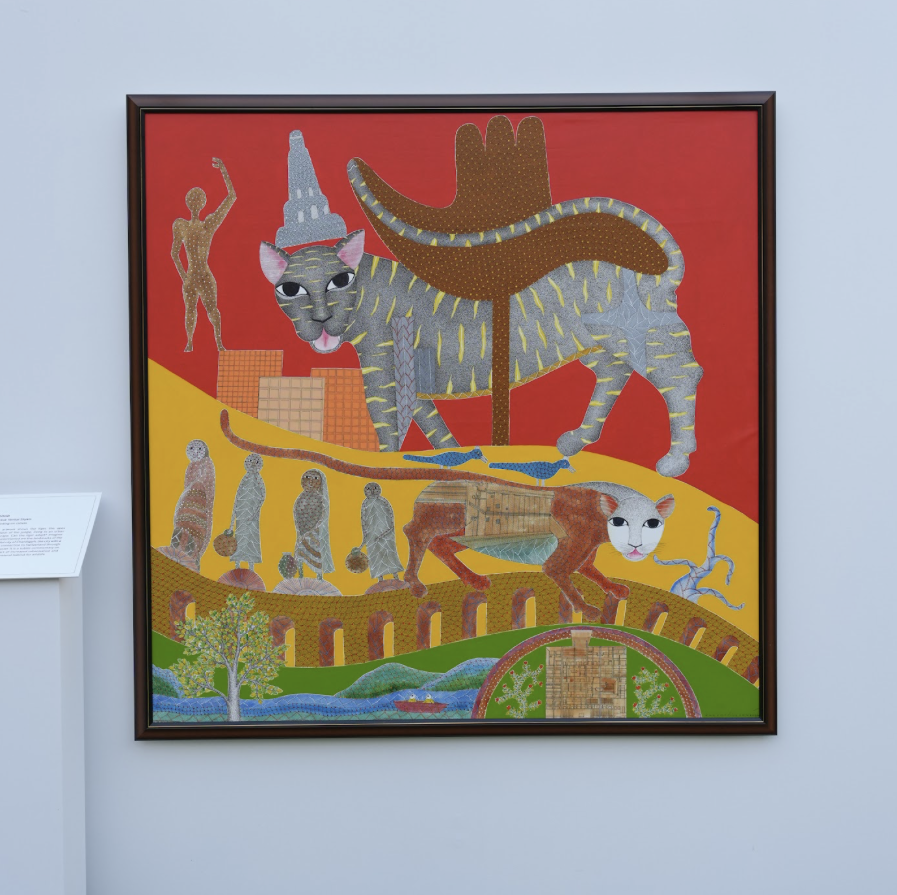
Indo Swiss Story
Phad is a highly narrative traditional art. Master artist Prakash Joshi was asked to execute this complex artwork, which fits the two disparate worlds of India and Switzerland into a piece rooted in tradition. Bollywood connects east and west, each section capturing film shoots in popular Swiss locales. Along with Alpine milkmaids and cowherds, we see glimpses of India’s temples, rural life, culture, and more…. An engaging study in contrasts that tells a tale.
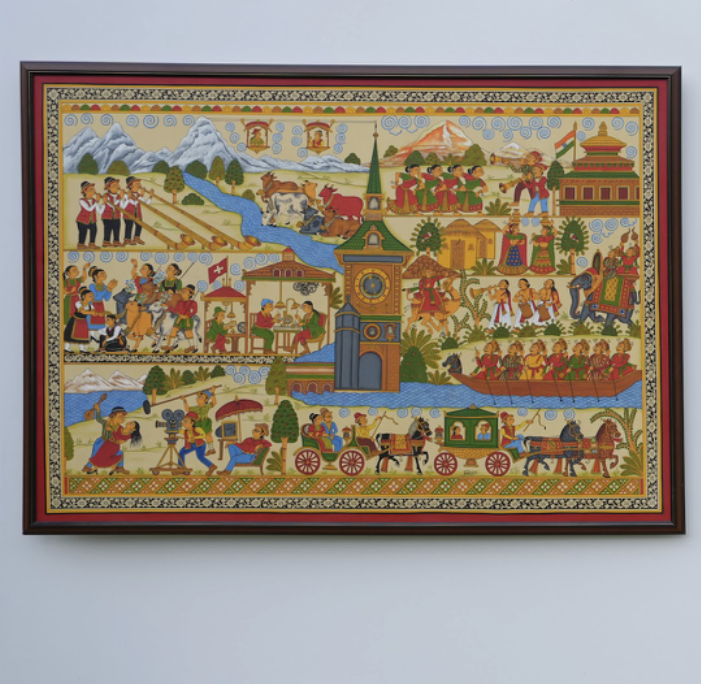
Time After Time
Madhubani artist Vijay Jha interpreted the time-cycle in the form of hours of a day. The sun and moon are in the centre of the painting, surrounded by circles portraying daily tasks and rituals in both cities and villages. Flanking the main composition are parts of watches gears and straps that form decorative motifs. This portrayal of time is at once traditional in style and extraordinarily fresh in expression.
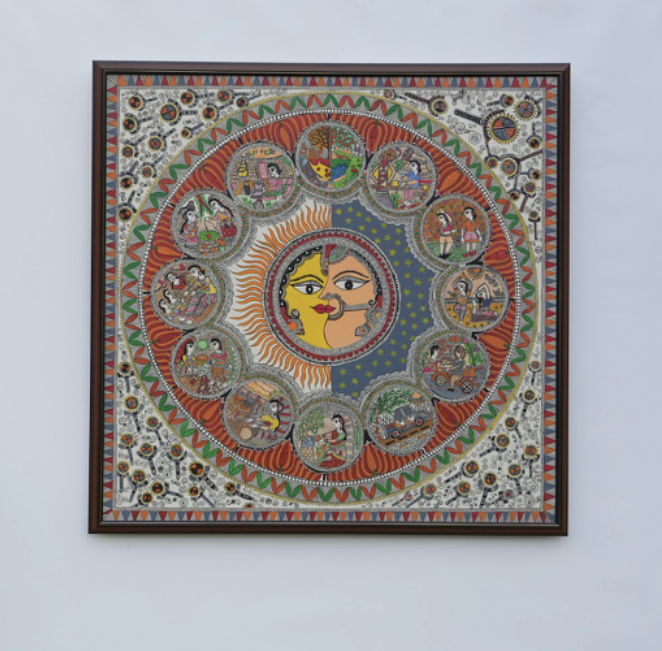
Connectivity – the Tech Age Dilemma
Master Warli artist Ramesh Hangade created paintings depicting modern times, the generational transition of social life, technology, and human connectivity. With the themes of social isolation and interconnectivity, he shows how we are continuously lured into a web of technology that disconnects us from those around us, while connecting us to a virtual world.

The Chandigarh Story
Architectural artist Pawan Kavitkar focuses on emerging India and architecture, as well as Le Corbussier’s city planning of Chandigarh. The painting features many of the city’s incredible set of modernist buildings and art. Russet sparrows, commonly seen around here, make an appearance. Kavitkar’s work uses the miniature style, allowing for impossible perspectives and composition with fine detail and many references all at once.
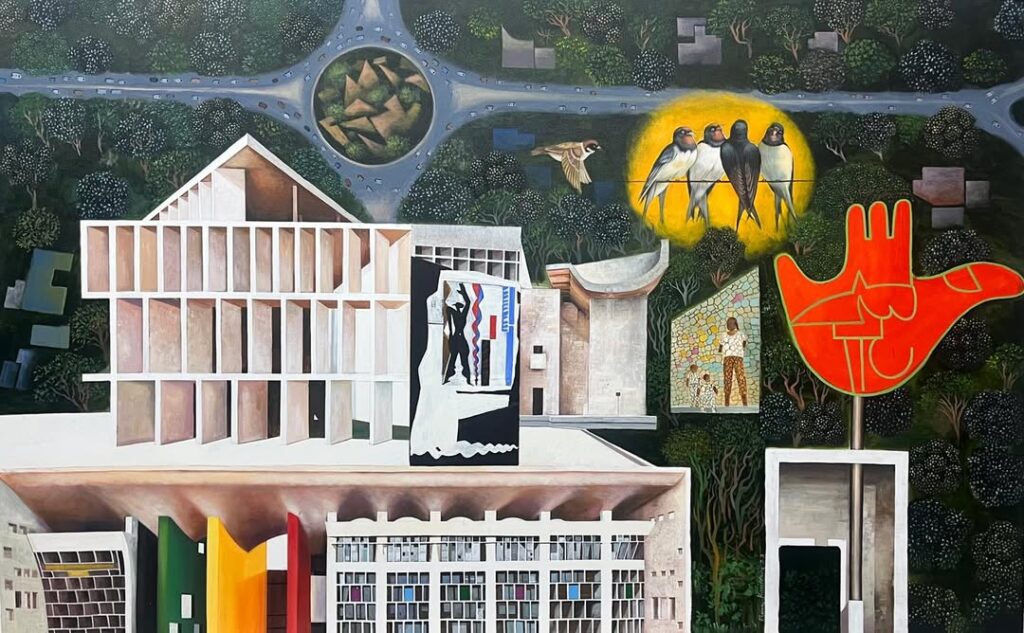
The Million Tree Project
The Million Tree Project started in the Cauvery region in 2021, with Isha Foundation. Ethos Watches intends to continue planting trees across the country until it reaches 1,000,000 trees. Nature and urban space artist Pawan Kavitkar uses the Mughal Miniature painting style, with very fine details depicting the many kinds of trees and foliage. The massive art piece has a waterfall in the centre, recalling the Cauvery area, where the first trees were planted.
